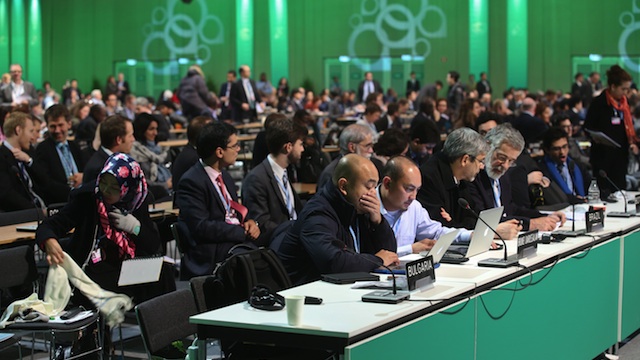SUMMARY
This is AI generated summarization, which may have errors. For context, always refer to the full article.

SYDNEY, Australia – The Pacific region faces serious economic losses due to climate change and it is critical that nations causing the problem step in to help, the Asian Development Bank (ADB) said Tuesday, November 26.
A new report by the bank released in Sydney, “Economics of Climate Change in the Pacific,” showed that losses would range between 2.9% and 15.2% of annual gross domestic product by 2100.
The Pacific contains some of the smallest nations on Earth and there are growing fears that global warming and rising seas threaten their very existence, with some of them atolls barely a meter (three feet) above sea level.
The report assessed the potential impacts of climate change on agriculture, fisheries, tourism, coral reefs, and human health, with the ADB’s Pacific director general Xianbin Yao warning of dire consequences.
“It is critical that countries contributing to the problem of climate change step up to assist Pacific friends and neighbours in the fight to protect their countries against natural disasters, crop losses, and forced migration,” Yao said.
“Our findings show that if not adequately addressed, climate change could overturn the region’s development achievements.”
Yao did not say which countries were being referred to but the United States, China, India, Australia and the EU are among the world’s major polluters.
According to the report, the most significant economic losses would be felt in Papua New Guinea, where climate change impacts could trigger a loss of up to 15.2%of GDP by 2100.
East Timor’s GDP is predicted to drop by up to 10%, followed by Vanuatu (6.2%), Solomon Islands (4.7%), Fiji (4%), and Samoa (3.8%).
Under a medium emissions scenario, Fiji, PNG, Samoa, Solomon Islands, East Timor and Vanuatu could see temperatures rise by 2-3 Celsius (3.6-5.4 degrees Fahrenheit) by 2070, the report said, which could lead to significant decreases in rain-fed agriculture, reduced fish catches, widespread coral bleaching, and falling tourism numbers.
The report noted that the negative effect on agriculture contributed to most of the total economic cost of climate change in the Pacific.
It recommended policy leaders take urgent action to mainstream climate change mitigation into development planning and develop forward-looking strategies.
Pacific countries will also need dramatically improved access to global and regional climate change funds, it added.
In September, the 15-nation Pacific Islands Forum signed a declaration committing themselves to urgent action on climate change, while pleading with the rest of the world to follow their lead.
The Majuro Declaration, named after the Marshall Islands’ capital, contains specific pledges on cutting greenhouse gas emissions and adopting renewable energy from each of the PIF nations.
Marshall Islands President Christopher Loeak said at the time that the goal was to create the political will for the world to adopt legally-binding climate change targets by 2015. – Rappler.com
Add a comment
How does this make you feel?
There are no comments yet. Add your comment to start the conversation.